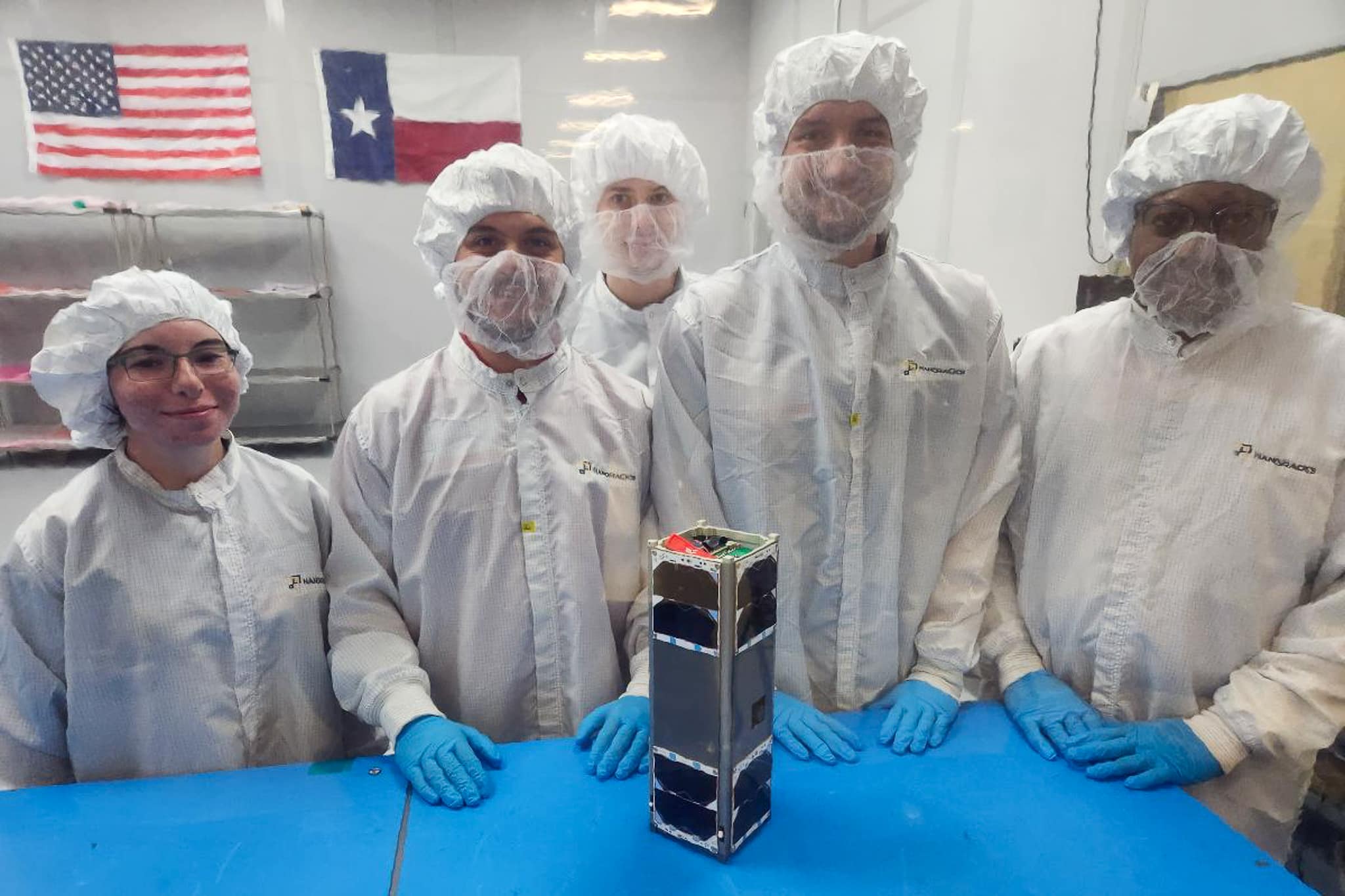Aviation Week Op-Ed: Cubesats Present Big Benefits for Students and Industry, Embry-Riddle President Says

In his latest Aviation Week essay, Embry-Riddle Aeronautical University President P. Barry Butler, Ph.D., highlights how cubesats have come to make space engineering and science accessible to a wide range of players through partnerships among commercial space companies, universities and NASA. Through the Hunt Library, the Eagle community can log onto ERNIE to freely access the op-ed. Alternatively, subscribers to Aviation Week can log on here to access the essay, which is also provided below.
By P. Barry Butler
When a Northrop Grumman Cygnus spacecraft launched on Sept. 14, a small satellite called EagleSat-2 hitched a ride to the International Space Station.
Bruce Noble, an Aerospace Engineering student at Embry-Riddle Aeronautical University, who served as project manager on EagleSat-2, watched the liftoff from Cape Canaveral Space Force Station in Florida. He celebrated the launch alongside an elated group of his fellow students and university alumni.
Some 25 years ago, sending a student-built satellite into space would have been nearly impossible. Space hardware often costs hundreds of millions — even billions — of dollars and takes decades to develop, build and launch. Involving aspiring engineers and scientists in such missions is highly improbable.
But at the dawn of the millennium, two professors came up with a small but mighty idea.
Bob Twiggs, a consulting professor in the Space Systems Development Laboratory at Stanford University, and Jordi Puig-Suari, an aerospace engineering professor at California Polytechnic State University, are credited with inventing what is now known as the cubesat standard.
Cubesats, often described as the size of a loaf of bread, were born as a teaching tool. Initially dismissed by the space industry, they have since come to make space engineering and science accessible to a wide range of players, through partnerships among commercial space companies, universities and NASA.
The key to the cubesat concept is a standardized form — a 10 x 10 x 10 cm-box (61 in.3) — and a launcher device that ensures a precision release away from critical equipment.
Smartphone technology and the boom in commercial space launches have generated a whole industry around cubesats, which can be packed with sensors, chips, solar cells, cameras and antennas.
Sent into low Earth orbit, cubesats and other types of small satellites are now monitoring crops, tracking animals, testing new instruments, beaming internet service and gathering weather data. NASA is even adopting them for complex missions to the outer reaches of our solar system.
Students can work on these projects thanks to their lower investment costs and risks. And the space industry gets to recruit graduating students who can boast hands-on experience with industry-level software and manufacturing and testing equipment.
Cubesat technology continues to be advanced by universities all over the world. To date, university teams have built 763 nanosatellites — defined as satellites weighing between 1kg (2.2 lbs.) and 10 kg (22 lbs.) — that have been successfully launched, according to the Nanosats Database.
NASA has partnered with university programs to advance new capabilities and research. While cube satellites are limited by their small dimensions, they are nonetheless testing advanced technologies, including onboard electronics, payloads, sensors, power systems and high-speed laser communications.
Small satellites are also producing groundbreaking science. Launched in 2015, the twin satellites of the FIREBIRD II mission — a collaboration among the University of New Hampshire, Montana State University, Los Alamos National Laboratory and The Aerospace Corporation — returned high-quality scientific data on electron microbursts for several years, according to a 2022 paper about small satellites as tools to study space weather.
Importantly, these cubesat projects are creating a solid career path for students seeking to break into the booming commercial space industry. This is particularly critical at a time when companies are desperate for engineers with experience in space technology and whose knowledge spans multiple engineering disciplines.
NASA’s CubeSat Launch Initiative has put space within reach of even high school students. During the past 15 years, NASA has launched more than 150 cubesats through the initiative. Most have been built by universities. This includes Embry-Riddle’s EagleSat-2, which aims to study how different types of computer memory chips degrade when exposed to space radiation.
Students involved in Embry-Riddle’s cubesat projects often have jobs lined up before graduation. Noble, the senior who is the project manager for EagleSat-2, is among them.
Upon graduating in May 2026, he will start work as an associate electronic engineer on system integration and testing at a major aerospace firm.
The aerospace industry owes a debt of gratitude to professors Twiggs and Puig-Suari for supporting the space talent pipeline.
